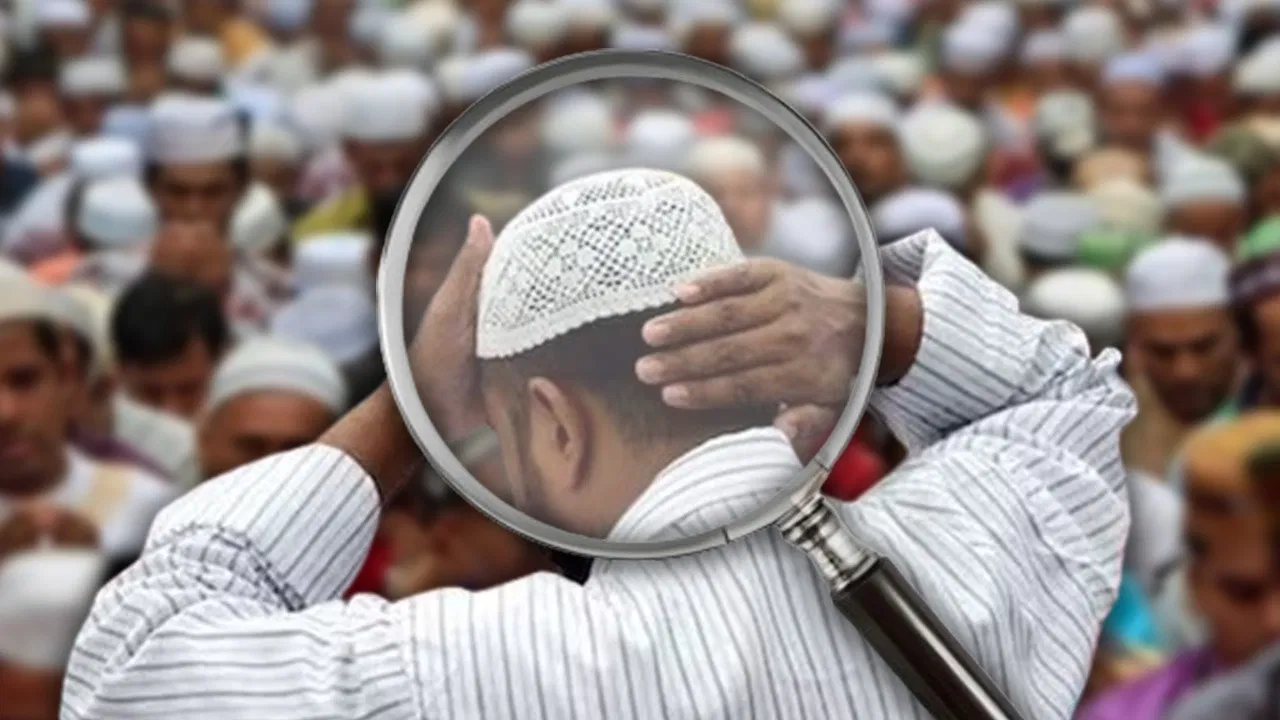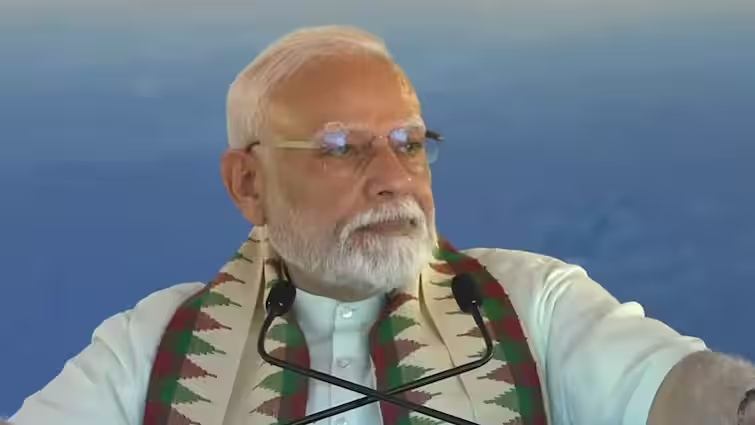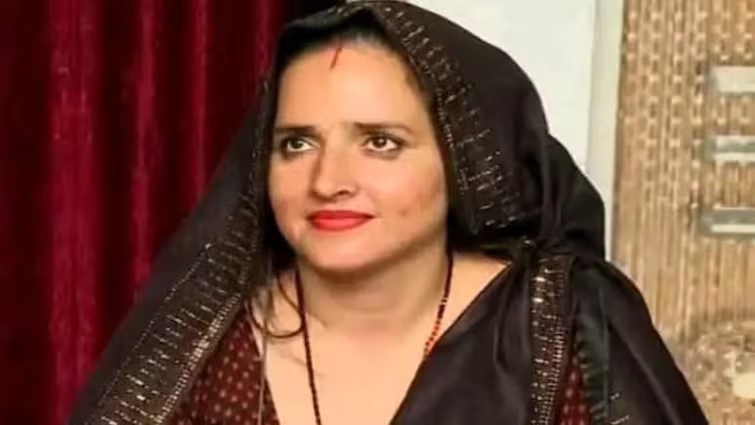Not only Brahmin-Thakur, caste census will also increase the tension of Syed and Pathan
- bySherya
- 02 May, 2025

In India, caste census will be conducted not only for Hindu community but also for Muslim community. This decision of Modi government will affect both Hindu and Muslim communities. In the census, there will be a column for caste along with religion, which will reveal the population of different castes and changes in reservation policies are possible. Caste census is going to increase the tension of not only Brahmin Thakur but also Syed and Pathan.

For the first time after independence, caste census is going to be conducted in the country. Modi government has also approved caste census from the cabinet. In this way, castes of Muslim community will be counted along with Hindus. In the census questionnaire, there will be a column for caste along with religion. In the caste survey in Bihar and Telangana, data of castes of Muslims along with Hindus was collected. In such a situation, if caste census is going to be conducted at the national level, then will the castes of both Hindus and Muslims be counted?
At the national level, the Modi government has decided to conduct a caste census, so its political effect will not only be on the Hindu upper caste Brahmins, Kshatriyas, Bhumihars and Koyasthas but will also be on the upper caste Muslims like Sheikh, Syed, Pathan. The main reason for this is that after the caste census, the form of reservation can change.
Muslim communities are divided into three groups
The castes of the Muslim community are divided into 3 major classes and hundreds of biradaris. The upper class Muslims are called Ashraf, which includes Syed, Sheikh, Turk, Mughal, Pathan, Rangad, Kayastha Muslim, Muslim Rajput, Tyagi Muslim. The backward class of Muslims is called Pasmanda Muslim. It includes OBC castes like Ansari, Qureshi, Mansoori, Salmani, Gujjar, Gaddi, Ghosi, Darji, Manihar, Kunjra, Teli, Saifi. After this, there are extremely backward Muslims, who are called Ajlal, which includes Dhobi, Mehtar, Abbasi, Bhatiyara, Nat, Halalkhor, Mehtar, Bhangi, Bakkho, Cobbler, Bhat, Dafali, Pamaria, Nalband and Fisherman. There are no Dalit castes among Muslims.
Muslim castes will be counted like Hindus
Like Hindus, Muslims will also have different caste censuses. After the implementation of Mandal Commission's recommendations, upper class and backward class castes emerged among Muslims. Like Hindus, there is no authentic data for Muslim OBCs. A large number of Muslims are OBCs (Pasmandas), which have been included in the backward class list of the state and the centre. In all the censuses conducted since independence, Muslims have been counted on the basis of religion. The reason for this is also that caste census is not being conducted in the country.
The caste census to be conducted in the country will not only reveal the number of castes but will also reveal their social, economic and educational status. This will also reveal how many castes the Muslim community is divided into, how many are upper class Muslims and how much is the population of Pasmanda Muslims. PM Modi's focus was on wooing Pasmanda Muslims, who come under OBC. In this way, the authentic data of OBC Muslims will be revealed to the people.
However, it is believed that the population of Pasmanda Muslims is 80 to 85 percent. In such a situation, the caste census will reveal how the entire Muslim society is not backward, but there is a Pasmanda class among Muslims, which is 80-85 percent of the entire Muslims, but their development or upliftment has not been possible. This roughly matches the census of 1881, which said that only 19 percent of Muslims in India were from upper castes, while 81 percent are from lower castes.
Syed-Pathan on the side of Thakur-Brahmin
The number of Pasmanda Muslims in the Muslim community is said to be around 85% while 15% are upper caste Muslims like Syed, Sheikh, Pathan. Upper caste Muslims are socially and economically strong and they have dominated all political parties while the Pasmanda community is marginalized socially, educationally, economically and politically. It has been said that in the name of Muslims, some upper castes of the Muslim society are getting the benefit of all the comforts and facilities. The condition of Muslim OBC castes is worse than Hindus. Its authentic data will come out through caste census.
After the completion of the caste census process, there will be a demand to increase the reservation limit. Just as Brahmins, Thakurs and Kayasthas dominate social, educational and government jobs among Hindus, Sheikhs, Syeds and Pathans dominate the Muslim community. After the caste census, a war for political dominance can also break out among Muslims. Pasmanda Muslims may raise their voice against Ashraf Muslims, which will have an impact on everything from reservation to the field of politics.
Will be applicable on 50% limit of reservation
The first impact of caste census will be on the 50 percent limit of reservation. The Supreme Court has put a cap of 50 percent on reservation. When the Mandal Commission recommendations were implemented, 27 percent reservation was provided to OBCs, but after caste census, the government will have authentic data. OBC castes can demand reservation according to their population. While giving reservation to SC-ST, their population is considered, but this is not the case with OBC reservation.
If the limit of reservation is increased, the anxiety of Hindu castes like Brahmin, Thakur and Kayastha will increase and the tension of Muslim upper castes like Sheikh, Pathan, Syed, Rangad will also increase. Mandal Commission recommendations were implemented, and along with Hindu upper castes, Muslim Sheikh, Pathan, Syed were also against it. In such a situation, if there is talk of increasing the limit of reservation after caste census, then upper castes of Muslims can also come out in protest. The Muslim community is divided into three classes like Ashraf, Pasmanda and Ajlal, on whom this census will have different effects.



